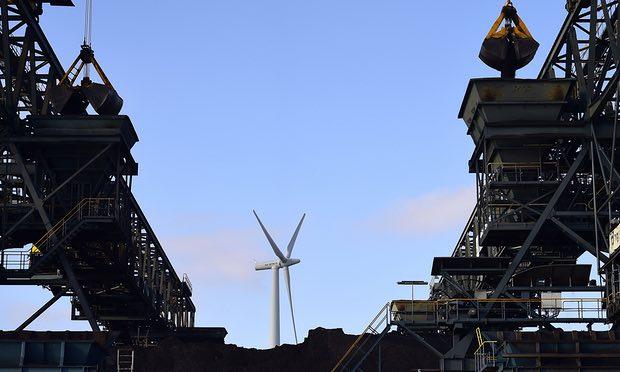A new “carbon law”, modelled on Moore’s law in computing, has been proposed as a roadmap for beating climate change. It sees carbon emissions halving every decade, while green energy continues to double every five years.
The carbon law’s proponents are senior climate-change scientists and they argue it provides a simple, broad but quantitative plan that could drive governments and businesses to make urgently needed carbon cuts, particularly at a time when global warming is falling off the global political agenda.
Christiana Figueres, who as the then UN’s climate chief delivered the landmark Paris climate change deal in 2015, said: “The carbon law for keeping us on track with Paris – something we can all follow – is such a valuable contribution at this critical time.”
Moore’s law is the observation that innovation doubles the number of transistors on a computer chip about every two years and it has held true for 50 years. The researchers behind the carbon law say similar laws of exponential growth can already be seen in clean energy.
“We are already at the start of this trajectory. In the last decade, the share of renewables in the energy sector has doubled every 5.5 years. If doubling continues at this pace fossil fuels will exit the energy sector well before 2050,” said Johan Rockström, at Stockholm University in Sweden, the lead author of an article published in the journal Science which sets out the carbon law.
The researchers also set out milestones for each decade, with coal disappearing by 2030, and oil by 2040. “It is both a tale of extreme urgency, reminding the world community of what was agreed [in Paris], and also saying it’s not more difficult than it was establishing Moore’s law in IT which came through investment, innovation and economies of scale,” said Prof John Schellnhuber, at the Potsdam Institute for Climate Impact Research in Germany, another author of the article and who has advised Angela Merkel, the Pope and the EU.
He said the aim of the carbon law was to provide “a really compelling story of how decarbonisation can be achieved”, and to bridge the gap between the pledges made by nations in Paris and what will be needed in the long term to keep global warming well below the danger limit of 2C.
“Short-termism has been a problem for all the 25 years I have been involved in climate negotiations,” Schellnhuber said. “This has exacerbated in 2016 and 2017. The climate issue has disappeared from the radar screens of the international policy makers.”
However, the carbon law shows how global warming can be beaten, said Gareth Redmond-King at WWF: “It’s important to remember that there is genuine hope. This inspiring vision of change reaffirms that we still have time, provided we commit to serious, ambitious and urgent action to control our environmental impact. Every journey, however long and complicated, is easier with a clear map.”
The carbon law and accompanying roadmap sees what the authors call “no-brainer” policies in place by 2020, including ending the huge subsidies enjoyed by fossil fuels, a $50 per tonne price on carbon emissions and a crackdown on energy efficiency.
The 2020s are the most challenging decade on the route to a zero emissions world in 2050, said Schellnhuber, as both coal and polluting vehicles have to be phased out at the same time as new clean technology is developed to be deployed in the 2030s. This could include building on pilot projects already underway, such as developing new materials to replace concrete in buildings, and superconducting electricity grids.
Schellnhuber believes all this is possible, saying India will lead the coal phase-out in favour of solar and that no country will allow new combustion engine cars on the road by 2030: “I talk to the CEOs of big car companies and they know the time of the combustion engine is over, in particular for the diesel engine.”
He said potential solutions already exist across all sectors, but that ambition was needed in every area to avoid the worst impacts of climate change. “What we are saying [in the article] is that if you play your cards right, you win the game – all the jokers and high value cards are in the pack already.”
Prof Chris Rapley, a climate scientist at University College London, said: “The article performs a helpful function by offering a way to re-express the Paris goal in practical terms that defines what those actions would need to achieve, ie halving emissions each decade plus building up capacity to draw down CO2 from the free atmosphere. There are other possibilities, but the idea of a ‘Moore’s Law’ analogue is quite attractive.”
However, Rapley cautioned against scientists being too prescriptive in the policies governments should adopt, which could make it easier for those opposed to climate action to dismiss the analysis. Setting out the scale and pace of carbon cuts needed and then helping various sectors such as energy and transport make their decisions could be more effective, he said.

